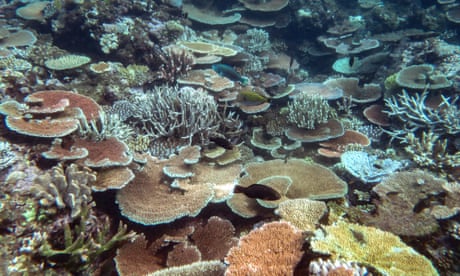- by foxnews
- 08 Apr 2025
Record coral cover on parts of Great Barrier Reef at risk from global heating, scientists warn
Record coral cover on parts of Great Barrier Reef at risk from global heating, scientists warn
- by theguardian
- 04 Aug 2022
- in news

Marine scientists monitoring the Great Barrier Reef say they have recorded the highest levels of coral cover in 36 years in the north and central areas, but warned any recovery could be quickly overturned by global heating.
The first ever mass bleaching on the reef was recorded in 1998, but since then corals were hit in 2002, 2016, 2017, 2020 and again earlier this year.
Surveys are carried out by towing divers over reefs at a standardised rate, recording corals, bleaching levels, COTS and the number of coral trout and sharks.
About half of the 87 reefs surveyed for the report were carried out before the most recent bleaching event unfolded in February and March this year.
Aerial surveys carried out in March by the Australian Institute of Marine Science and the Great Barrier Reef Marine Park Authority covered 750 individual reefs.
The fast-growing acropora species of branching and plate-like corals that were pushing coral cover up were also preferred prey for COTS, he said.
In the southern region, the average coral cover dropped from a 2021 estimate of 38% to 34%.
While bleaching was widespread across the reef in February and March, Emslie said the heat stress had not reached levels likely to cause corals to die.
He said there was evidence that even when corals did not die from bleaching, the phenomenon could reduce their ability to reproduce, slow their growth and make them more susceptible to coral disease.
He said it could take a year or more for those sublethal effects to become apparent.
The most recent mass bleaching coincided with a UN monitoring mission to the reef that had been requested by the Morrison government as it attempted to fight a recommendation to place the reef on a list of world heritage sites in danger.
- by foxnews
- descember 09, 2016
Ancient settlement reveals remains of 1,800-year-old dog, baffling experts: 'Preserved quite well'
Archaeologists have recently unearthed the remarkably well-preserved remains of a dog from ancient Rome, shedding light on the widespread practice of ritual sacrifice in antiquity.
read more


